It’s that time of year when we dust off our crystal balls to make our predictions about gravel tech trends for the next year.
With some basking in the glory of a successful 2023 prediction (and some cringing at completely missing the mark), we’ve gathered six of our keenest minds to try again for 2024.
Will aero gravel cease to be a trend? Will gravel ‘pros’ simply opt for endurance bikes over dedicated gravel steeds? Or will we see Microshift make gravel headway with its Sword groupset?
We can’t guarantee we’ll be on the money every time, but this is what we think – or hope – will happen in 2024.
Ashley Quinlan | We’ll all stop caring about aero gravel
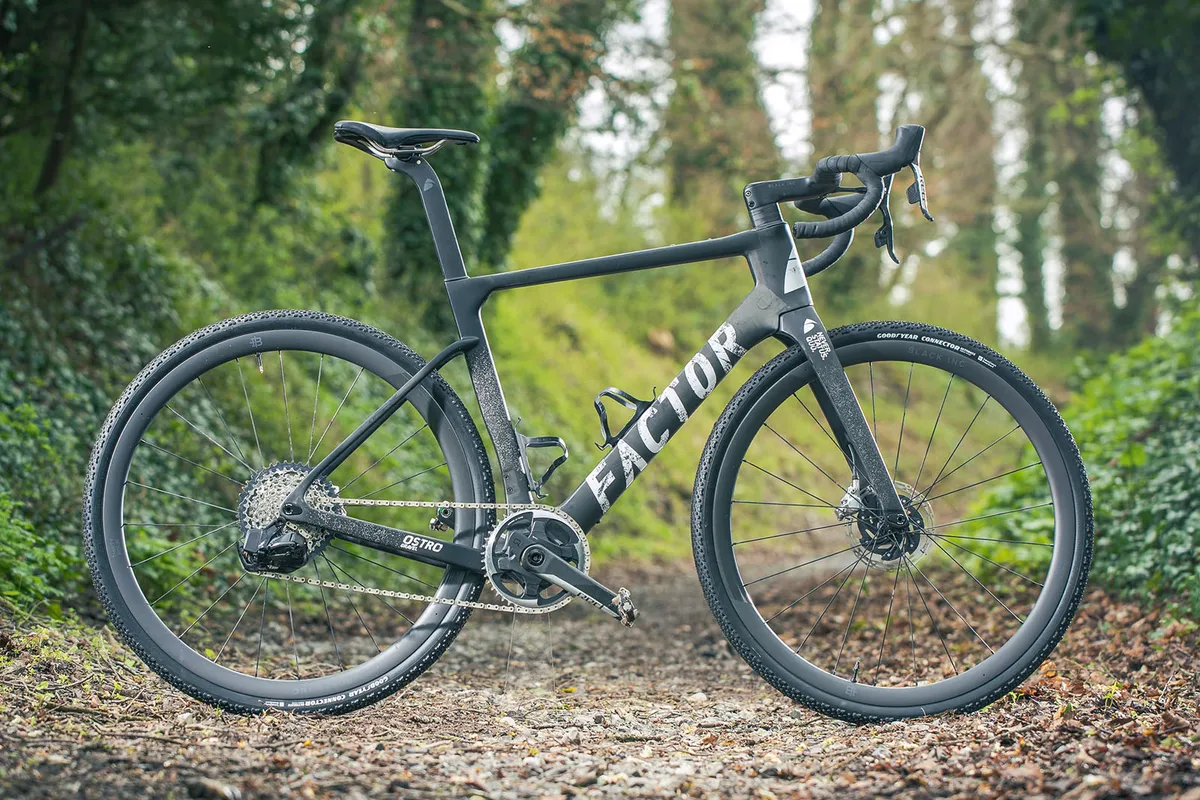
In 2024, I hope bike brands will start thinking beyond aero in their pursuit of speed on gravel, and consumers will show they’re disinterested, too.
The fact is, making something more aerodynamically efficient in the wind tunnel is one thing, but out in the real world, it’s something entirely different.
When that real world is the more turbulent arena of gravel riding, then the aerodynamic gains brands present in their marketing spiel are almost meaningless. Especially if you’re not a competitive racer.

Yes, a more aerodynamically optimised gravel bike is going to be quicker compared to one that isn’t, all things being equal. But, it’s fair to say, nothing is equal.
When you factor in geometry and handling characteristics, componentry, tyre choice, and other more nebulous concepts such as ride feel and confidence (which is derived from a blend of these things, plus the frame itself), it’s clear that for most gravel riders, aero should be at the bottom of their wishlist.

This means the current generation of incredibly racy gravel bikes, such as the Factor Ostro Gravel and BMC Kaius, could have had their day before it even arrived.
Yes, there will always be those who would like something akin to a road bike for their gravel interests.
However, if that’s what you want, I’m not sure what’s wrong with an all-road oriented endurance bike.
Warren Rossiter | Get relaxed to go further and faster

Overall, I’m looking forward to bikes built to go further and faster, and be more forgiving.
Looking back, 2023 was the year of the gravel race bike, but I think this niche within a niche is going to be a blip in the development of gravel bikes.
As Ash alludes to, making fast aero-optimised gravel racers with aggressive geometries is great if you are riding on the princess gravel conditions of many races. However, this isn’t the experience of most gravel riders, and the more progressive brands are acknowledging this.
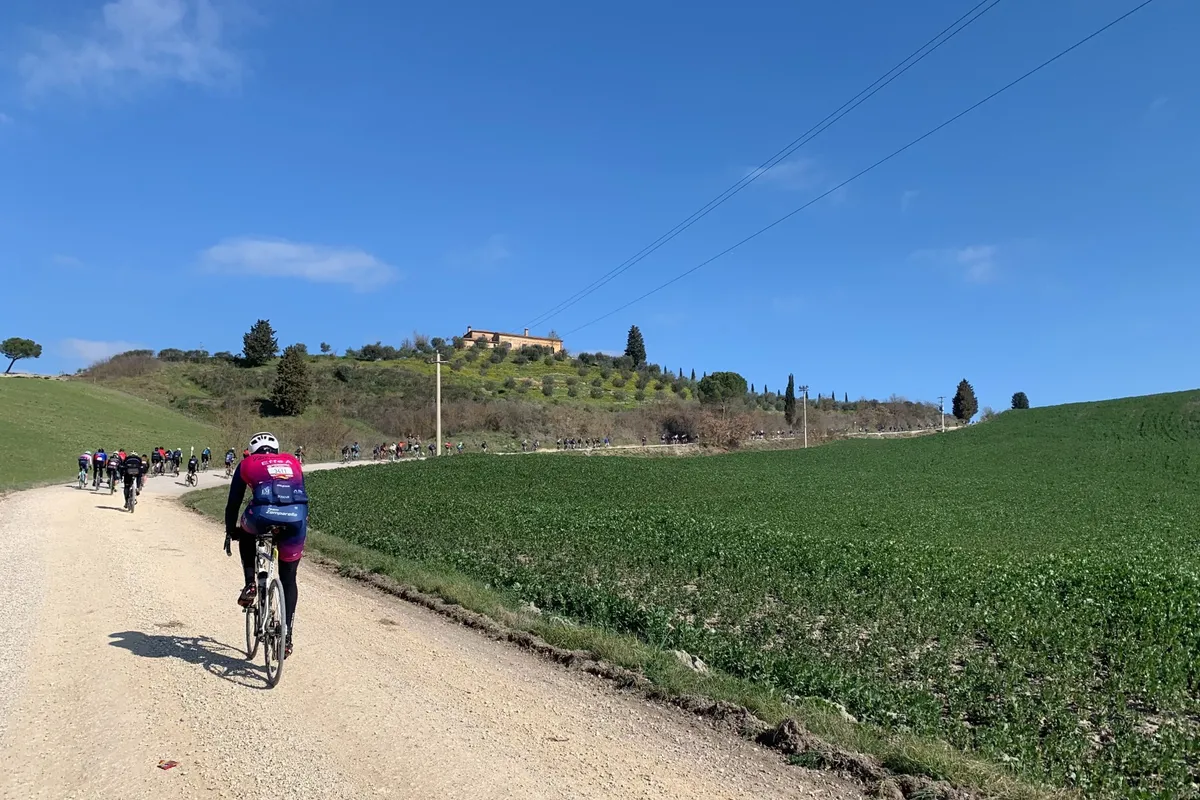
We are seeing the emergence of more progressive takes on gravel bike geometry, with long front centres, relaxed head angles, and suspension-corrected front ends.
In 2024, we’ll be seeing more and more of that. In fact, we already are – look at the Wilier Adlar, Merida Silex and GT Grade and you'll find they all have long front centres, short stems, and relaxed head angles.
Even classic gravel-cum-burly cylocross bikes such as the Santa Cruz Stigmata have been reinvented with these design traits.

When it comes to technical-terrain loving, gravity-friendly geometry bikes, such as the Evil Chamois Hagar, Rondo MYLC or Nukeproof Digger RS, design is coming of age. Here, gravel bike design is evolving to take into account the demands of the terrain.
It’s similar to the revolution that happened in mountain bike design more than a decade ago, and I see gravel growing and evolving at a rate that mirrors mountain biking’s trajectory from niche to mainstream.
Liam Cahill | Most gravel pros will use endurance road bikes for 2024 races

My prediction is that gravel pros will opt for their sponsor brand’s endurance bike if it takes a 40mm tyre, in 2024.
Give a racer the choice between two bikes and they will choose the fastest. That’s true for road, gravel and cross-country mountain biking.
Gravel races cover huge distances, with races lasting upwards of 10 hours. Such long events are, however, often won by the smallest margins. We’re talking about gaps of half a wheel.
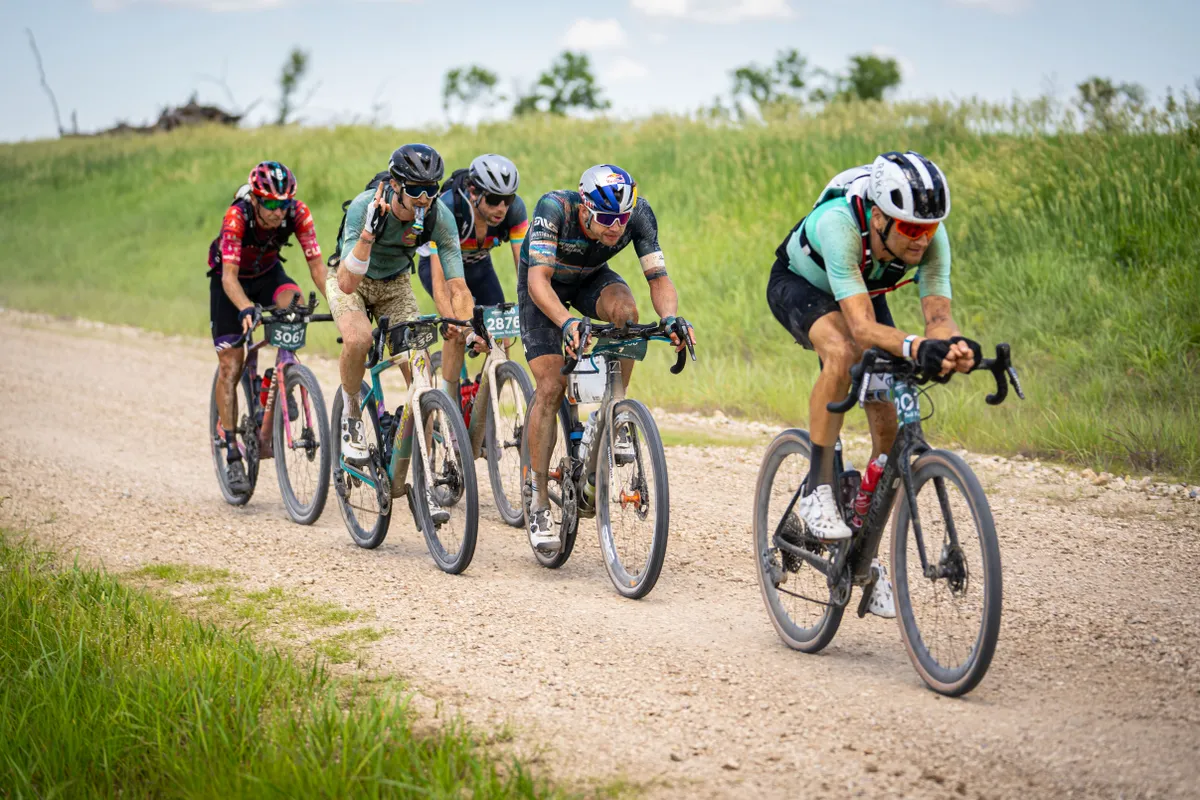
If a slightly more efficient bike enables you to save just a little bit of energy versus your opponent, you have a better chance of the half-wheel gap being in your favour.
Endurance bikes such as the Specialized Roubaix SL8 are designed with more thought paid to aerodynamics because their intention is to make you fast on long road rides. As a result, they’ll often be slightly more optimised than a gravel race bike.
The focus on long-distance efficiency is baked into the identity of an endurance bike.
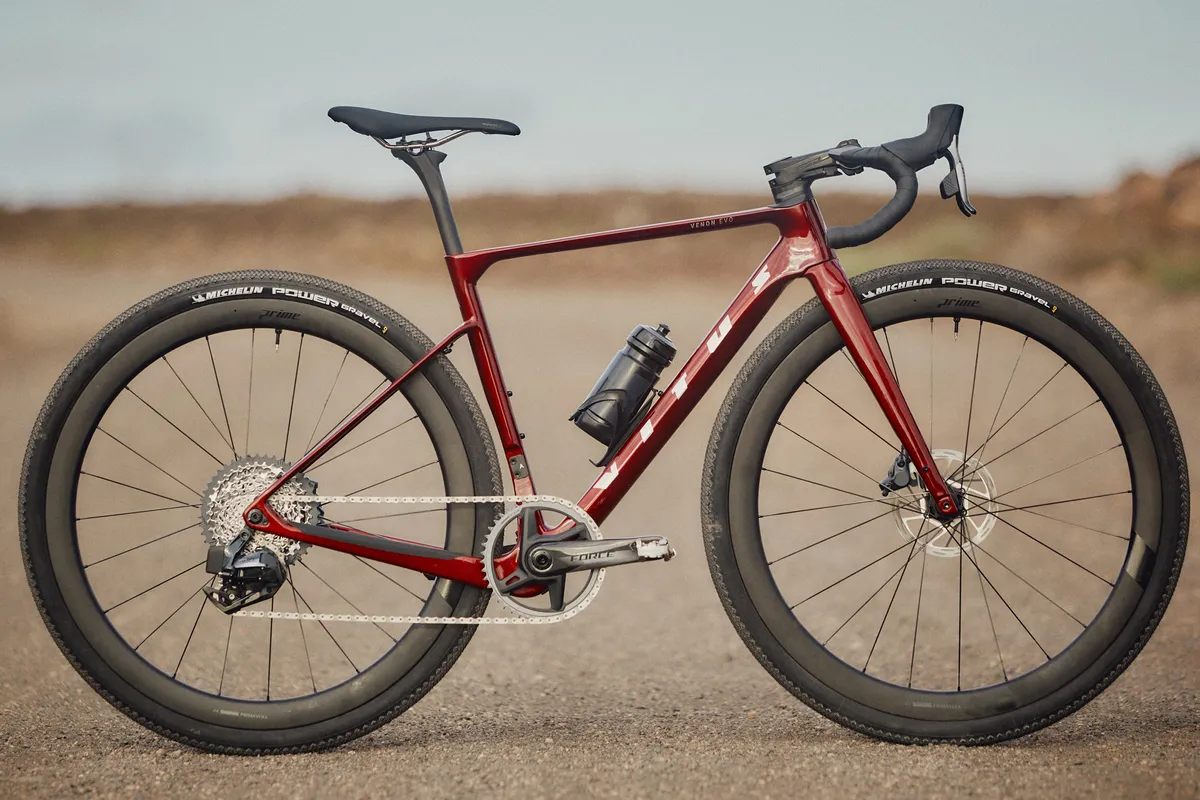
These were machines that pro road racers used to turn to for the tough cobbled classics. Their longer wheelbase and larger frame clearance allowed for wider tyres to be fitted than on a road race bike.
As aero became more prominent in road racing, endurance bikes adopted the tube shapes of their thoroughbred siblings.
Gravel, meanwhile, is a younger discipline and the bikes are still working their way into sub-categories.
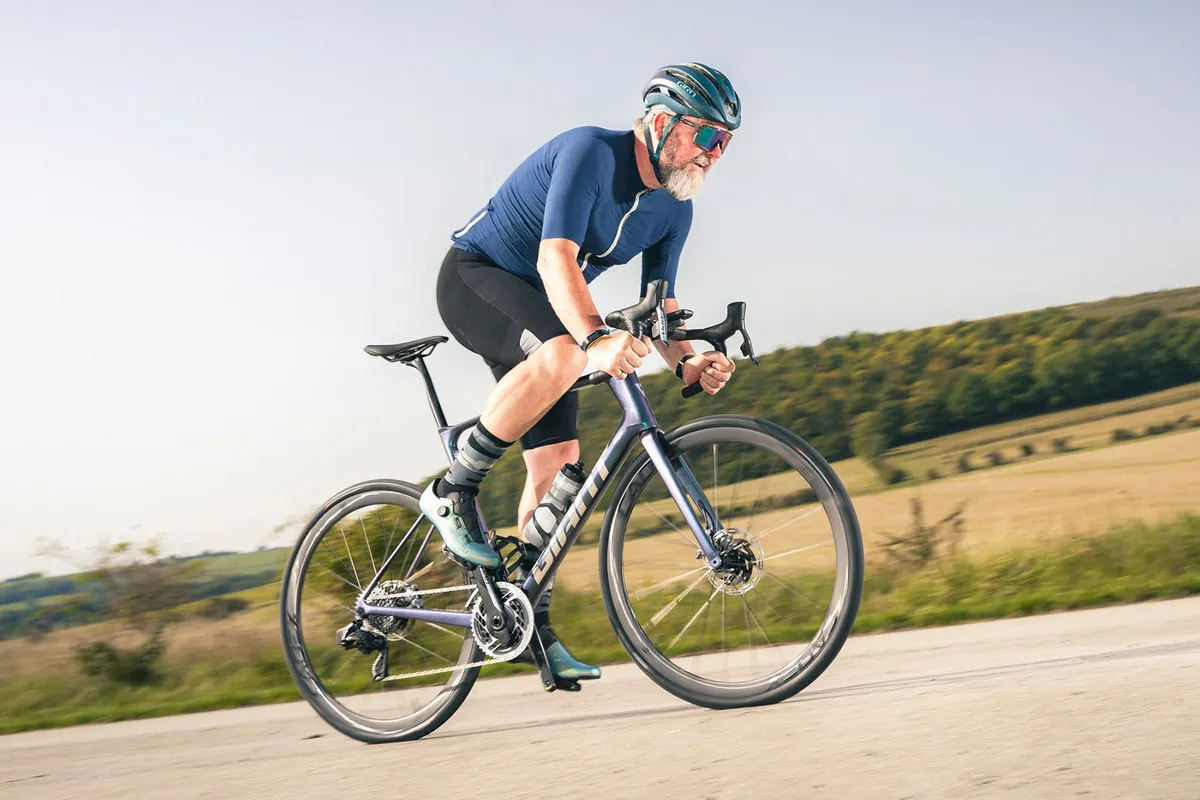
I think the demand for gravel race bikes is growing, but the road endurance market is established and seems to be moving forward following many years of being tied too closely to the pro road race scene.
The Vitus Venon Evo is another great example. This endurance road bike won our Bike of the Year award and has enough clearance for whopping 45mm tyres.
Even endurance bikes that focus on low weight, such as the latest Giant Defy, pack enough tyre clearance for lighter gravel duties.
In 2024, I think these bikes will win some very big gravel races. And there will be arguments. Again.
Oscar Huckle | SRAM’s Universal Derailleur Hanger will become more prominent

In 2024, I predict more and more gravel bikes will adopt SRAM’s Universal Derailleur Hanger standard.
SRAM originally launched the UDH in 2019 as a means of unifying derailleur hanger standards.
The concept was brilliantly simple and life would be much easier living in the knowledge a hanger will almost certainly be available at most bike shops, rather than having to trawl through the internet and find your specific derailleur hanger.
SRAM UDH quickly caught on in the mountain bike sphere and it’s now very rare to see a new release not adopt the standard.
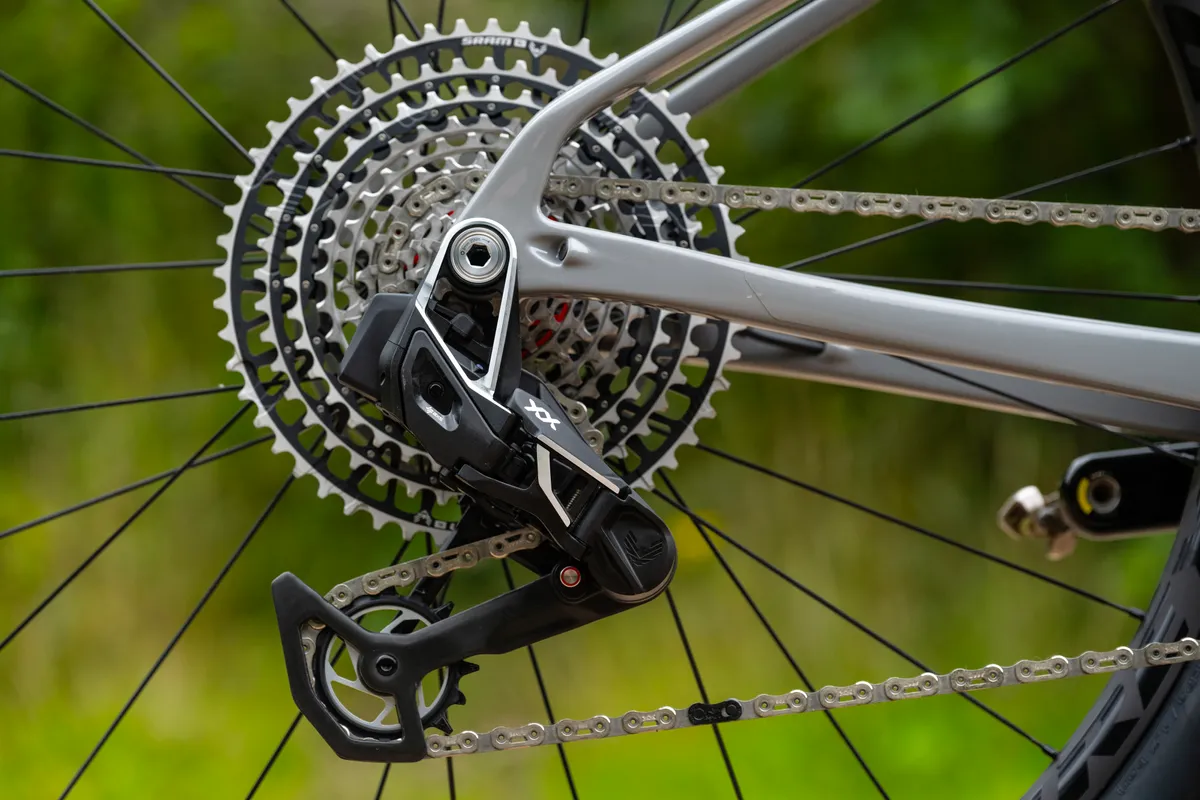
With hindsight, SRAM also had an ulterior motive for introducing UDH because the rear derailleur on its new T-Type Eagle Transmission groupsets, released in 2023, forgoes the hanger altogether and mounts straight onto the dropout.
That said, UDH is also compatible with other groupset manufacturers.
Like hydraulic disc brakes and tubeless tyres, the road and gravel world is always more reticent to cash in on new tech.

Because SRAM’s road, gravel and mountain bike electronic groupset components are inter-compatible, this has led to the advent of the mullet drivetrain.
This sees gravel or road bike shifters paired with a mountain bike drivetrain and is particularly useful for bikepacking, where you may want to have a more generous gear range.
Now that T-Type Eagle Transmission exists, many riders will rightly demand compatibility with the latest tech, and I believe this will effectively force gravel bike manufacturers to adopt UDH.
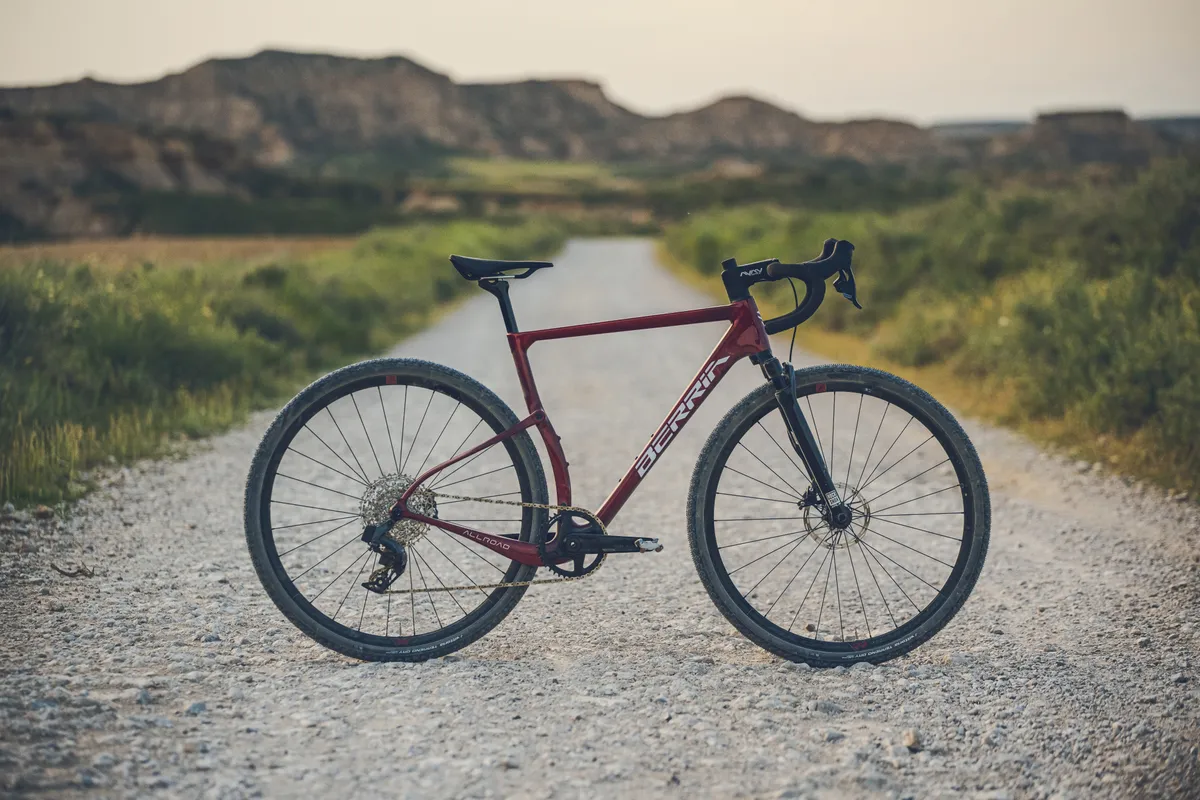
And for riders who are happy to stick with conventional rear derailleurs, it just makes sense for derailleur hanger standards to be harmonised. Why should we continue to live in an archaic world where we have to rummage around a box of derailleur hangers in a bike shop in the hope something will work?
A handful of manufacturers have smartly taken the standard on – examples include the Berria Belador Allroad, ENVE MOG, Santa Cruz Stigmata and Scott Solace Gravel. Let’s see who else joins the club in 2024.
Jack Luke | Shimano is late off the mark with a Cues gravel groupset and Microshift will become a serious challenger
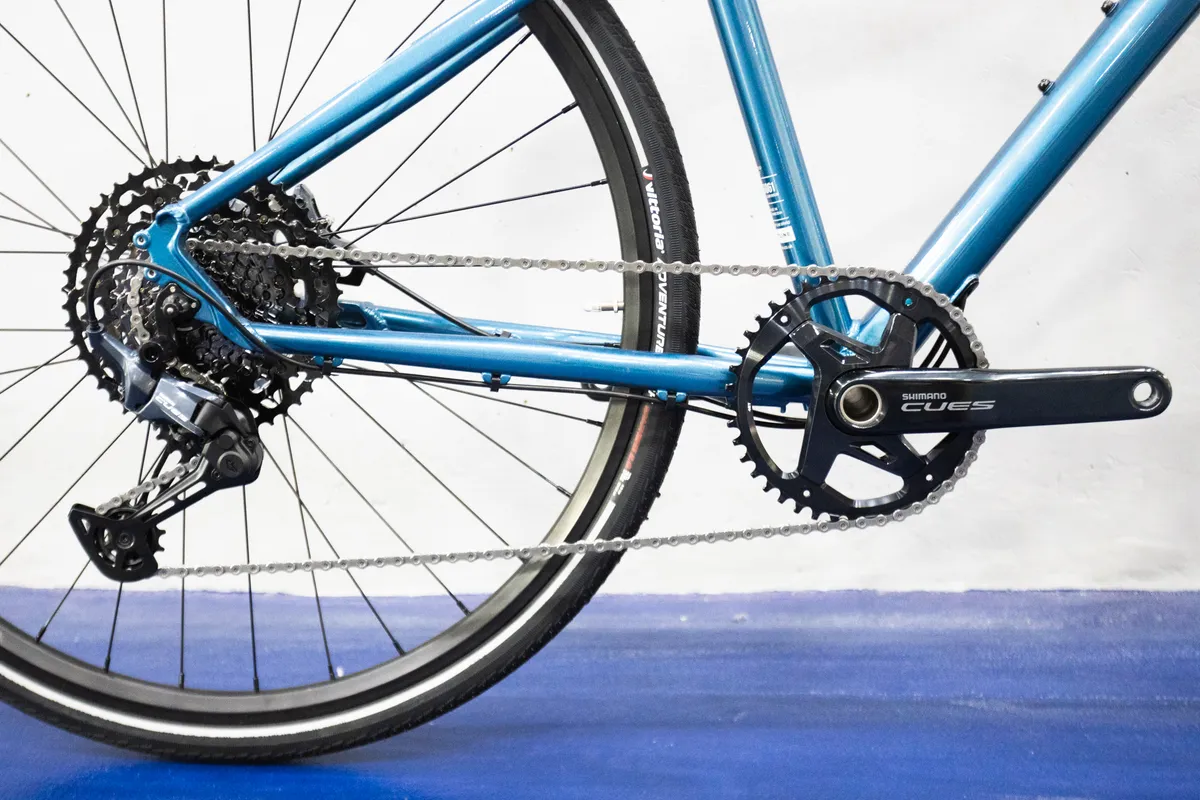
Shimano’s new Cues groupset families were introduced earlier this year to unify the brand’s many lower-tier road and mountain bike groupsets.
While 2x options are available, the primary aim of Cues is to provide OEMs with easy-to-understand, affordable and adaptable 1x drivetrains in an all-Shimano package.
At launch, the brand also (vaguely) confirmed that its 10-speed Tiagra road bike groupset would be phased out and replaced with Cues-family components.
As I said at the time of the launch, I’m hopeful Shimano will do the right thing and use the same cable pull ratio for Cues drop-bar levers as Cues MTB components.
This will, finally, make affordable wide-range 1x Shimano gravel groupsets a possibility.
However, it's almost a year on and we’re yet to hear a peep about any drop-bar components for Cues.
Meanwhile, Microshift made waves with its temptingly affordable Sword gravel bike groupset.
This is available aftermarket but, more significantly, will be specced on Decathlon gravel bikes and, possibly, bikes from Canyon too.

Assuming these bikes are available soon and Sword lives up to expectations, this will be a golden opportunity for Microshift to further cement its position as a serious challenger to Shimano.
As for SRAM, while Apex AXS is its cheapest contemporary groupset, it’s nowhere near as affordable as Sword or Cues. As an outward observer, SRAM doesn’t appear to be interested in this lower end of the market.
Of course, production cycles in cycling are much, much longer than the gnat-like attention span of grade-C cycling media influencers like me – it may well be the case that Cues is already on its way to OEMs around the globe, but I have my doubts.
With that in mind, I’d say Microshift is one to watch in 2024.
George Scott | Challenger brands will try to have their say

Without wanting to tread on Jack’s toes, my bet for 2024 is that we’ll continue to see more challenger brands enter the market, aiming to take a slice of that sweet gravel pie.
Microshift has a part to play here, of course. I’m interested to see how Sword performs – watch this space for our review – and how popular it becomes with brands and riders alike.
However, the direction of Shimano, SRAM and Campagnolo – be it electronic groupsets or punchy pricing – leaves room for more challenger brands.

TRP has shown its hand in the mountain bike world, with the EVO12 mechanical groupset. Could the Taiwanese company, which has serious component pedigree through its Tektro division, make a play in gravel, too?
Meanwhile, the likes of L-TWOO and Sensah – two Chinese brands – are looking to disrupt the market. The former already has the 1x12-speed GRT drivetrain for gravel, while the latter offers MTB, road and folding bike components, but not gravel.
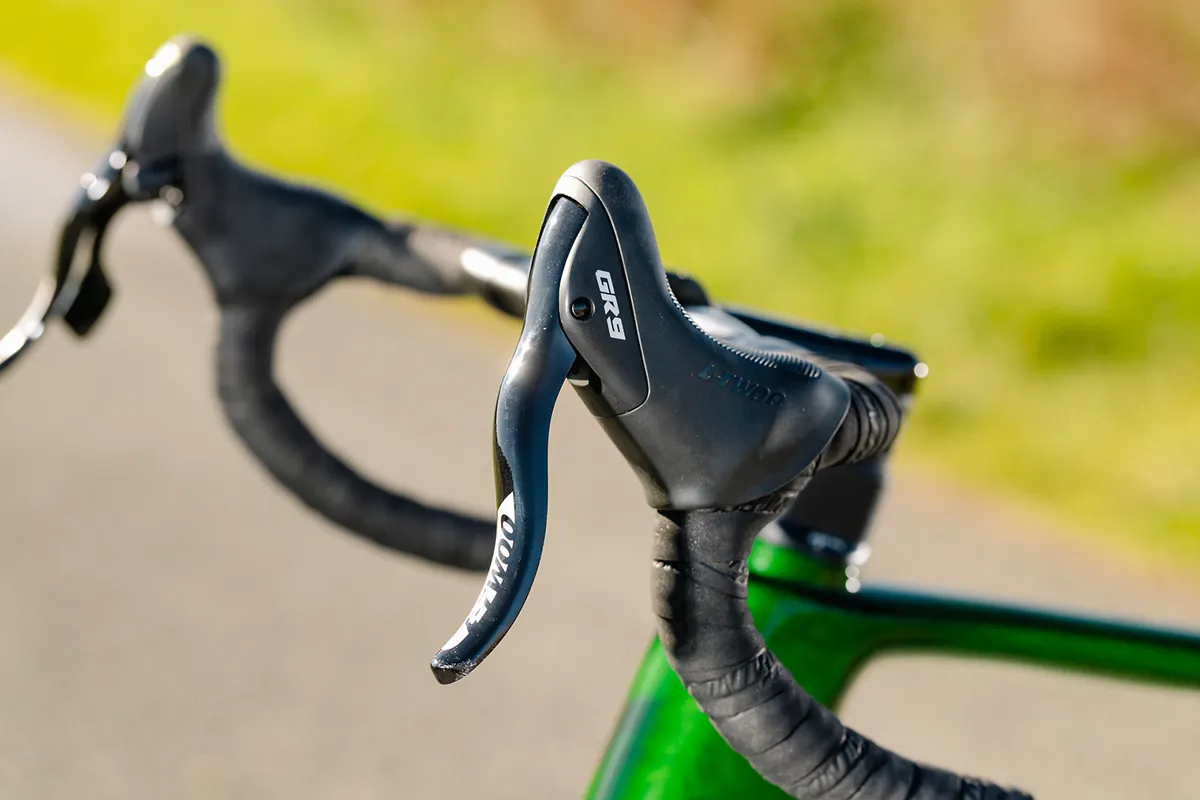
Now, there’s a long way to go before either takes a significant chunk from the likes of TRP and Microshift, let alone challenging the ‘big three’ of Shimano, SRAM and Campagnolo.
But some riders are beginning to look elsewhere for affordable or niche components, and the prominence and proliferation of brands ready to scratch that itch is likely to grow.
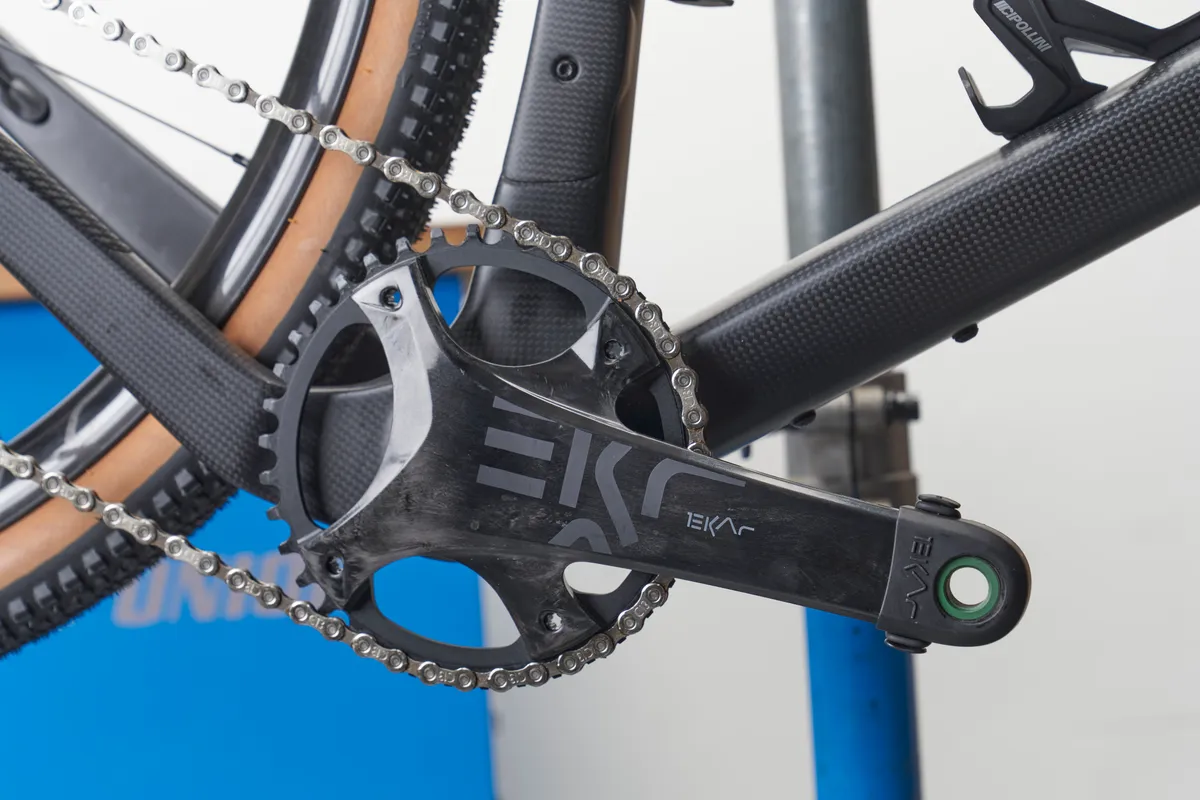
Finally, on the subject of Campagnolo, it’d be grossly unfair to call the Italian brand a challenger, but it lives in Shimano and SRAM’s shadow on the gravel scene.
With Campag now dropping out of the WorldTour, following Ag2r La Mondiale's switch to Shimano, will the storied Italian brand look to gravel for its future? Campagnolo Ekar, launched in 2020, is due an update, at the very least.
